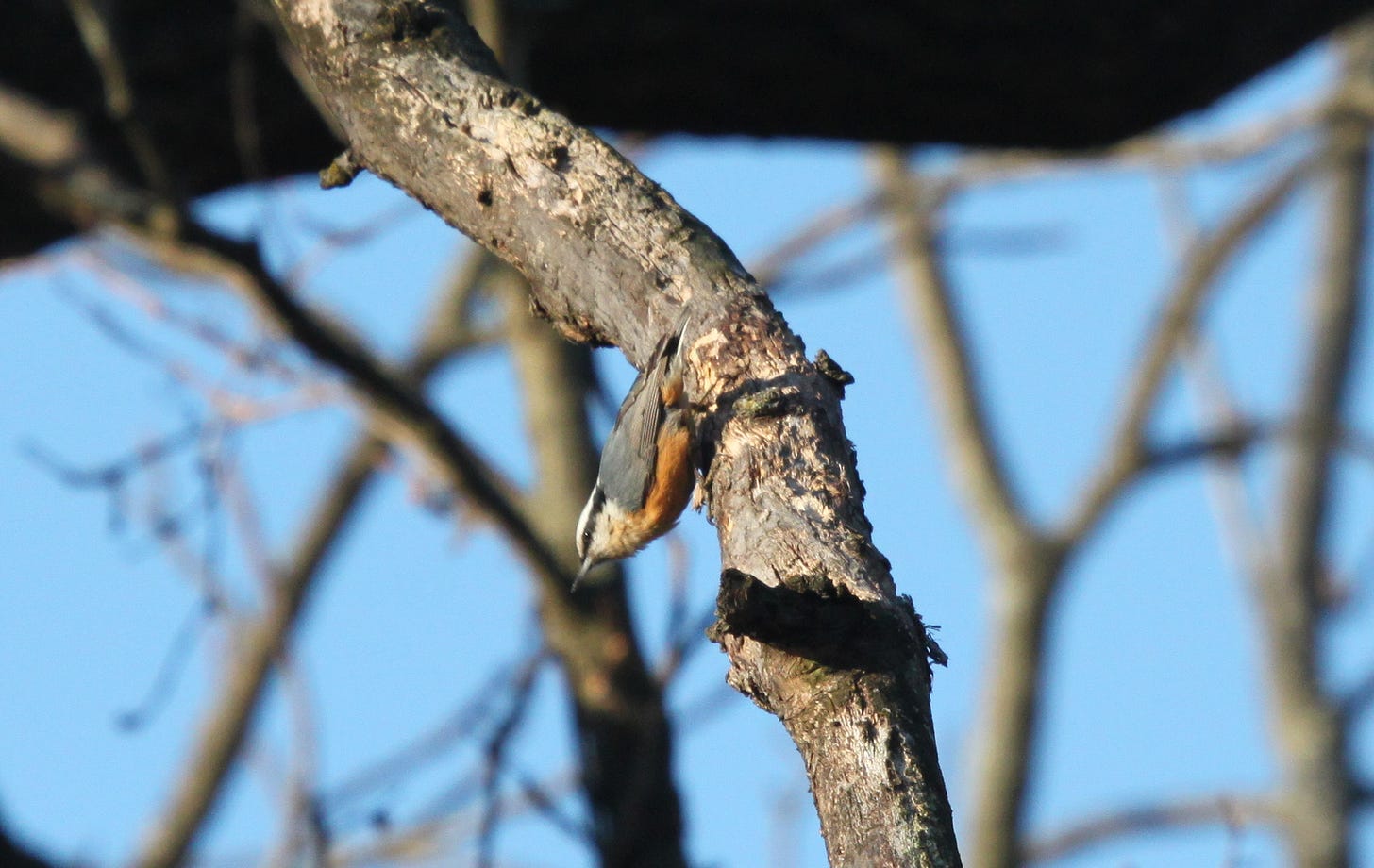TWiB Notes: Heat wave birds, House Wrens, and duck numbers
Hot weather hits as fall migration is under way.

Last week’s heat wave left many of us dreaming of fall and cooler days ahead. The funny thing is, though, we are already smack dab in the middle of fall—or at least fall migration for many species. Birds—particularly Passerines, or perching birds—have been moving south throughout the month, returning from more northern breeding haunts. For these species (think warblers and thrushes), fall is well under way.
Then an unseasonably late heat wave struck a huge portion of the country. Wednesday’s high of 98 degrees set a record at O’Hare Airport, and Thursday’s high of 100 tied a record. It’s an idiosyncrasy that fall migrants were being seen throughout the day Wednesday and Thursday on some of the hottest days of summer. A quick check of eBird shows at least eight warbler species at Montrose Point Bird Sanctuary. Bay-breasted Warblers, Blackburnian Warblers, and Tennessee Warblers aren’t typically birds we think of seeing on the hottest days of the year.
The hot weather kept many people indoors last week. Much like subzero temperatures, it was dangerous to be outside for any length of time. That affected the volume of birds being reported via eBird, too, as it crowdsources checklist submissions from everyday users. The heat made conditions uncomfortable for birders—probably even more than the birds. That led to some peculiarities, like zero checklists from hotspots Gillson Park (Wilmette) and LaBagh Woods and one each from Humboldt Park and Jackson Park.
Fall migration strikes early in these parts. We have between now and about Thanksgiving to really enjoy birding before the winter doldrums set in. So it’s best to brave these conditions—even some late-season heat—while we can.
Checking in on the Mallard population
Ducks Unlimited released a report last week showing that waterfowl populations were down 7 percent from the year before and 9 percent from the long-term average. Ducks Unlimited described the results as “somewhat disappointing” and reflecting “a complex relationship between waterfowl, weather, and habitat availability.”
Ducks Unlimited actually tracks the number of ponds—there were 4.975 million ponds in 2023 versus 5.457 million ponds in 2022. That’s an important metric because drought conditions can take away the small, shallow wetlands that provide habitat for many waterfowl.
One of the more puzzling declines of late has affected the seemingly ubiquitous Mallard. Estimates for mallards were down 18% from 2022 and 23% from their long-term average. Various theories have been put forth, including the idea that domestic Mallards are breeding with wild Mallards, hence infusing the population with birds maladapted for natural environments.
Wren and now
When last I wrote about them, our backyard House Wrens were exhibiting confusing behavior. From April through mid-July, one, two, and sometimes three wrens were going in and out of our wren box but also leaving the yard for several hours each day. It wasn’t clear if they were nesting or not, and House Wrens do maintain multiple boxes at one time.
Finally, something changed around the third week of July. I watched as one of the wrens, presumably a female, began spending much longer periods of time in the box. Within a week or so, a presumed male was even more skittish than usual, hurrying back and forth to the box with some urgency.
Soon, I observed it carrying what looked like food, though at times it was hard to discern it from nesting material.
Finally, we heard the slightest of pipping from the nest box and concluded that the wrens had successfully hatched a brood. The calls became more and more adamant as the nestlings developed quickly—even a week later their demanding was easily heard anywhere in the backyard.
Birds progress from nestlings to fledglings in a blink. So in the fog of full-time jobs, school, household chores and the like, we altogether missed the juvenile wrens’ departure from the box. Since about the first week of August, the box has gone silent. Presumably these wrens are faring well and preparing for migration and the journey south sometime in the next six weeks or so.
Know someone who might enjoy these newsletters? Giving a gift subscription is easy, and you can start the process by clicking the button below. Thank you for supporting writing and storytelling about birds!
If you liked today’s post, you also might like:
TWiB Notes: Movie gaffes, the Hawks, and hewing yews
“Are You There God? It’s Me Margaret” is the coming-of-age novel by Judy Blume that features an 11-year-old girl grappling with new friends, feelings, religion, and the beginning of adolescence. A film adaptation of the novel released…
TWiB Notes: Birding slumps, Larophile problems, an albatross, and shrikes
Last week a member of the Illinois Birders Exchanging Thoughts (IBET) message board wrote: “Lately, I’ve been in a birding slump—am I the only one? Is it just me or does it sometimes feel like birding isn’t fun any more and I’m only doing it because I have to? Also does anyone have any advice on how to overcome this?”









A couple years ago a nice big group of migrating red-breasted nuthatches took over the conifers in our backyard for a few days. It was really fun to watch them skitter up and down the trunks. Hasn't happened since!